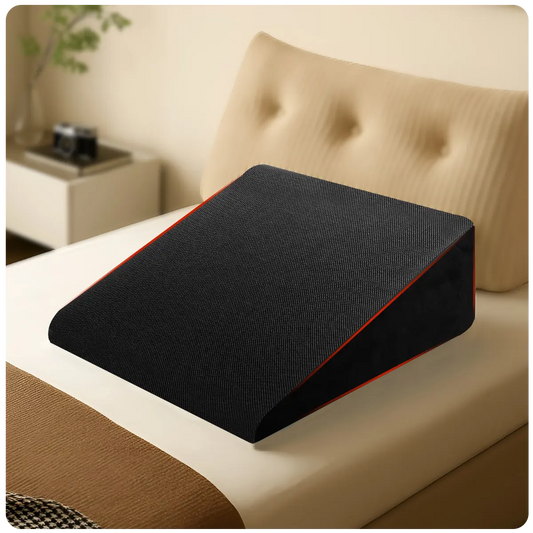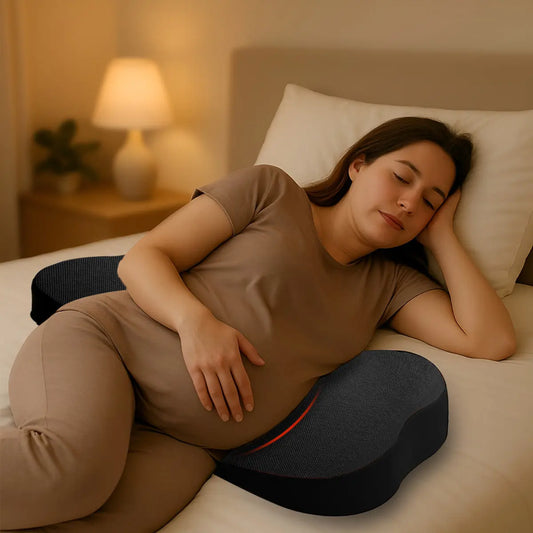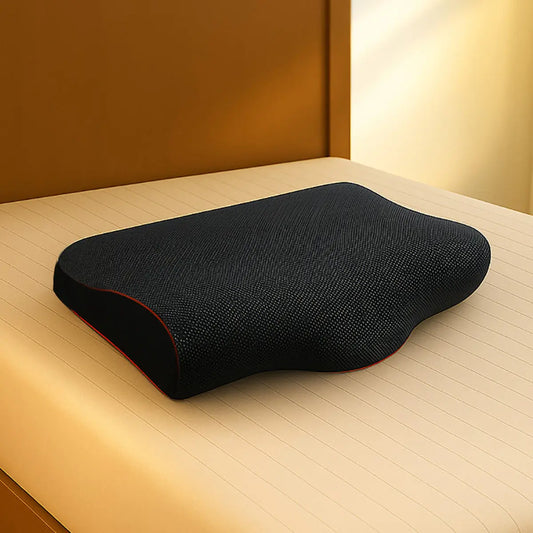
5 Ways Your Car Seat is Making Your Driving Back Pain Worse
Share
The Hidden Driving Back Pain Behind Your Daily Drive
🚗 Driving Back Pain kicks in as soon as you hit the road—your lower back aches, shoulders stiffen, and you keep shifting for relief. Sound familiar?
Your car seat isn’t just a place to sit—it might be the biggest reason behind your chronic back pain. The wrong posture, poor lumbar support, and long hours of sitting can silently wreak havoc on your spine.

1. Your Seat Puts Excess Pressure on Your Lower Back
🚨 The Problem: Car seats often have a built-in curve that may not align with your natural spine shape, forcing your lower back into an unnatural position. Without proper lumbar support, this can lead to increased disc compression, nerve pressure, and chronic lower back pain—especially during long drives. Over time, poor seat ergonomics can contribute to posture issues, stiffness, and even sciatic discomfort.
💡 Quick Fix: Upgrade your driving comfort with an ergonomic solution like the Trajectory Car Backrest Pillow. Designed to support the natural curve of your spine, it helps maintain proper posture, reduces pressure on your lower back, and minimizes strain during extended drives. Simply place it between your lower back and the seat to fill the gap, improve alignment, and drive pain-free.
2. Your Seat Angle is Ruining Your Posture
🚨 The Problem: A seat that’s too reclined forces your neck and upper back forward, while a seat that’s too upright strains your spine. Both positions lead to poor spinal alignment and long-term pain.
💡 Quick Fix: Adjust your seat to a 100-110 degree recline for optimal back support. Your knees should be slightly lower than your hips to reduce pressure on your lower back.

3. Long Hours in the Car Reduce Blood Circulation
🚨 The Problem: Sitting for prolonged periods restricts blood flow, leading to muscle stiffness, swelling, and even numbness in your lower back and legs.
💡 Quick Fix: Take breaks every 60-90 minutes to stretch and walk around. Try adjusting your seat to allow slight movement while driving.

4. Your Headrest is Causing Neck and Shoulder Pain
🚨 The Problem: If your headrest is too far back, you subconsciously lean forward, creating tech neck and shoulder tension. If it’s too high or too low, it can strain your neck muscles.
💡 Quick Fix: Position your headrest so that it supports the middle of your head, and your ears are aligned with your shoulders.

5. Your Seat Cushion is Too Firm or Too Soft
🚨 The Problem: A hard seat puts pressure on your tailbone, while a soft seat lacks support, leading to hip pain, lower back discomfort, and poor posture.
💡 Quick Fix: A seat cushion like the Trajectory Car Hip Pillow can provide balanced support, reduce pressure, and improve comfort on long drives.
Final Thoughts
Your car seat is meant to make driving comfortable, but if set up incorrectly, it can be your worst enemy, silently contributing to back pain, poor posture, and even long-term spinal issues. Prolonged sitting in an unsupportive seat can lead to muscle stiffness, nerve compression, and misalignment, making every drive a painful experience. However, making small ergonomic adjustments—like proper lumbar support, adjusting seat height and recline angle, and taking movement breaks—can significantly reduce strain, improve posture, and help prevent chronic back pain and long-term spinal damage. Investing in the right support, such as an ergonomic backrest pillow, can make a world of difference in maintaining a pain-free driving experience.
👉 Upgrade Your Comfort with the Trajectory Car Hip Pillow Today!
💬 Do you experience back pain while driving? Share your struggles in the comments!
🚀 Follow @trajectoryindia for more ergonomic tips!






